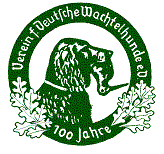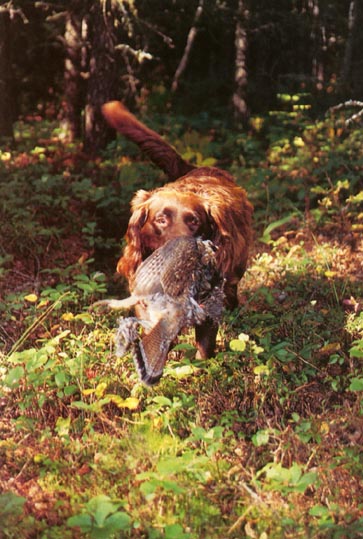The Wachtelhunde
by Bruce Ranta

|
Still, the Chesapeake was very well liked by Gary and his family. In fact, if it wasn't for the Chessie's size and over-enthusiasm, Gary would probably still be hunting with Chesapeakes today. Not having been totally happy with the two North American dogs, Gerhard decided to try a breed he was more familiar with, the wachtel, which harkened back to the days when he was a professional dog trainer and game manager in Germany. Although he was familiar with several breeds, he thought the wachtelhunde would probably be most suitable for his needs. In Germany, the wachtelhunde has always been a dog favored by professional hunters, game keepers, foresters and other hunters whose hunting grounds were mostly forest, brush and large expanses of water and where game was often scattered and scarce. It was never used much in open fields where game was often more concentrated and abundant. In the woodlands of northern Ontario, game is, more often than not, scattered and scarce. As a breed, the wachtelhunde was first registered in Germany in 1903. This was the year when most bird dogs in continental Europe were registered. Only nine dogs from across the country were originally registered as wachtelhundes. These original nine dogs were all brown or liver colored, but it was subsequently decided over the next few years that a strain of mostly brindle-colored dogs were also wachtels, even though they displayed traits somewhat different than those of the brown strain. The brown strain was known to be slightly calmer, a bit heavier set and somewhat more easy to handle than the brindles, which behaved and looked a little more like hounds. However, it was believed the two strains had common ancestry and for the good of the breed they were brought back together. Today, almost all of the differences and traits have evened out, and while there is still a tendency for brindle wachtels to be of slighter build and to be more energetic, it is by no means a hard rule. Color within the breed can vary from brown to brown-white to brindle, and dogs of any color can display more strongly one or another particular colored breed. Wachtel is actually the German word for quail, and reflects the origin of the wachtel as a dog for finding and flushing quail for falconers. While modern wachtels are much more versatile, their ability to find and flush game is unmatched, at least in Continental Europe. Although wachtels are not show dogs, conformity to the breed is an admired attribute. All "good" wachtels should stand between 45 and 54 cm (17 1/2 to 21 inches) at the shoulder, be good boned and muscular.
|
|
For more information or to find a Wachtelhund to purchase, visit wachtelhund.com or contact: John Oberhaus joseph9970@fbcom.net 563-210-8273 |

